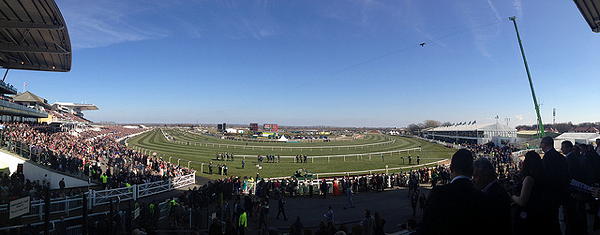Grand National News |
|
Three Fences That Can Make or Break Success at the Grand National |
 "Aintree Grand National 2013" (CC BY 2.0) by stacey.cavanagh
"Aintree Grand National 2013" (CC BY 2.0) by stacey.cavanagh
The Grand National is almost upon us, and the eyes of punters across the world will be fixed on Aintree and the outcome of the world’s most famous race.
Organisers are currently whittling down the competitors down to 40 horses for the meet on April 8, although only one will go down in history.
The race captures the imagination of even novices - so what should you do if you’re not familiar with the race or the horses and are looking for Grand National odds?
While you can check out Paddy Power's list of runners and riders for the latter, it’s also best to read about the perils of the Aintree below, as even the best of competitors have seen their dreams ended by the tricky fences on the famous course.
Becher’s Brook
Arguably the toughest jump on the course named after Captain Martin Becher, who fell from his horse and took shelter under the brook in the first official Grand National in 1839.
It remains an extremely perilous part of the race for horse and jockey alike even after a number of improvements have been made in recent years.
The competitors are required to clear the fence twice over the course of the race – the sixth and 22nd jump.
At first glance it may not look that difficult measuring just 4ft 10inches on the jump, but it’s the landing that will give jockeys sleepless nights due to the 6ft 10in drop on the other side.
Over 100 horses have fallen at the fence, with the worst incident occurring in 2004 when nine were caught in a pile-up.
Improvements have made the jump safer for all concerned, although two horses still fell last year.
The last recorded fatality came in 2012 when Cheltenham Gold Cup winner Synchronised fell, but continued rider less only to fall again at the 11th and was sadly euthanized due to his injuries.
 "Aintree Grand National 2013" (CC BY 2.0) by stacey.cavanagh
"Aintree Grand National 2013" (CC BY 2.0) by stacey.cavanagh
The Chair
The penultimate fence on the first round of jumps, with horse and jockey only required to complete this obstacle once in the race.
It provides the steepest test on the course, measuring at 5ft 2in, while the ditch in front of the fence makes it an even tougher test ranging 6ft in length.
If that’s not enough of a challenge breadth of the fence is 3ft across, highlighting the demands of the horse and the jockey’s technique.
Surprisingly there have not been a great number of fallers in recent history, with only six to stumble since 2010, although On His Own and Sir Des Champs were defeated by the obstacle in 2016, ending their charge for the title.
Canal Turn
Although this fence is smaller than the two previously mentioned at 5ft – it still provides a great deal of difficult for the competitors, in the eighth and 24th jumps on the course.
The horses are required to take a sharp left turn after the fence, making agility and balance key characteristics to negotiate the jump.
As a result, it has yielded a lot of falls in its history, while as recently as 2015 – Balthazar King’s fall forced the race officials to block access to the rest of the field for the second jump so the horse could receive treatment.
As many as five horses were downed in 2012, with a total of 14 to fall at the jump in the past five years. This fence can make-or-break the chances of competitors at the prestigious race.





